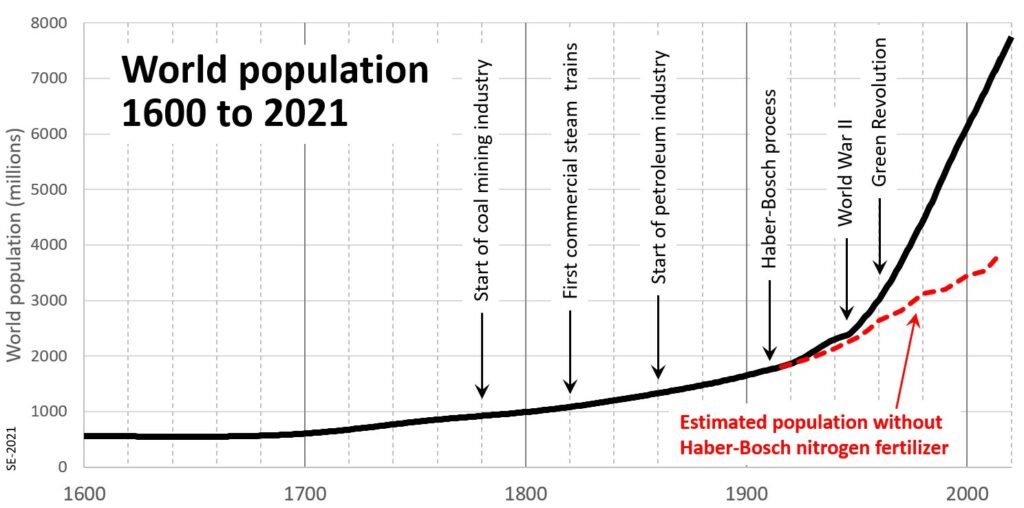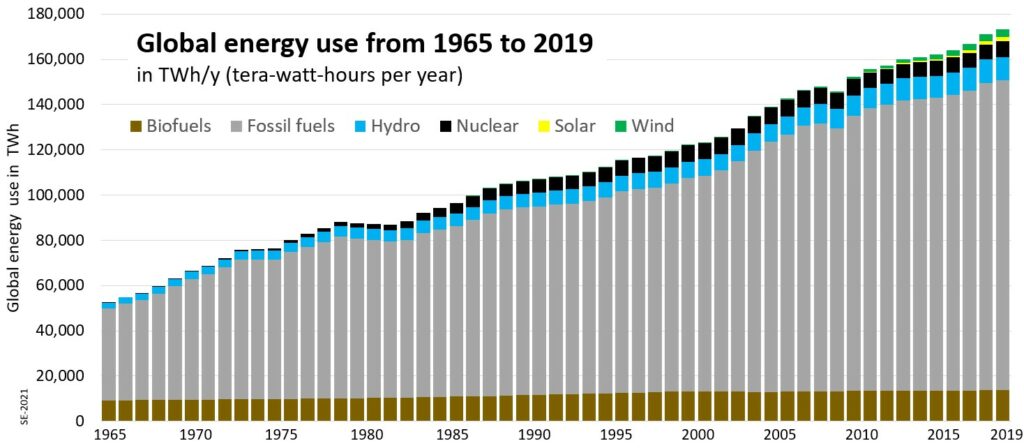9: Energy Resources
- Page ID
- 25489
\( \newcommand{\vecs}[1]{\overset { \scriptstyle \rightharpoonup} {\mathbf{#1}} } \)
\( \newcommand{\vecd}[1]{\overset{-\!-\!\rightharpoonup}{\vphantom{a}\smash {#1}}} \)
\( \newcommand{\dsum}{\displaystyle\sum\limits} \)
\( \newcommand{\dint}{\displaystyle\int\limits} \)
\( \newcommand{\dlim}{\displaystyle\lim\limits} \)
\( \newcommand{\id}{\mathrm{id}}\) \( \newcommand{\Span}{\mathrm{span}}\)
( \newcommand{\kernel}{\mathrm{null}\,}\) \( \newcommand{\range}{\mathrm{range}\,}\)
\( \newcommand{\RealPart}{\mathrm{Re}}\) \( \newcommand{\ImaginaryPart}{\mathrm{Im}}\)
\( \newcommand{\Argument}{\mathrm{Arg}}\) \( \newcommand{\norm}[1]{\| #1 \|}\)
\( \newcommand{\inner}[2]{\langle #1, #2 \rangle}\)
\( \newcommand{\Span}{\mathrm{span}}\)
\( \newcommand{\id}{\mathrm{id}}\)
\( \newcommand{\Span}{\mathrm{span}}\)
\( \newcommand{\kernel}{\mathrm{null}\,}\)
\( \newcommand{\range}{\mathrm{range}\,}\)
\( \newcommand{\RealPart}{\mathrm{Re}}\)
\( \newcommand{\ImaginaryPart}{\mathrm{Im}}\)
\( \newcommand{\Argument}{\mathrm{Arg}}\)
\( \newcommand{\norm}[1]{\| #1 \|}\)
\( \newcommand{\inner}[2]{\langle #1, #2 \rangle}\)
\( \newcommand{\Span}{\mathrm{span}}\) \( \newcommand{\AA}{\unicode[.8,0]{x212B}}\)
\( \newcommand{\vectorA}[1]{\vec{#1}} % arrow\)
\( \newcommand{\vectorAt}[1]{\vec{\text{#1}}} % arrow\)
\( \newcommand{\vectorB}[1]{\overset { \scriptstyle \rightharpoonup} {\mathbf{#1}} } \)
\( \newcommand{\vectorC}[1]{\textbf{#1}} \)
\( \newcommand{\vectorD}[1]{\overrightarrow{#1}} \)
\( \newcommand{\vectorDt}[1]{\overrightarrow{\text{#1}}} \)
\( \newcommand{\vectE}[1]{\overset{-\!-\!\rightharpoonup}{\vphantom{a}\smash{\mathbf {#1}}}} \)
\( \newcommand{\vecs}[1]{\overset { \scriptstyle \rightharpoonup} {\mathbf{#1}} } \)
\( \newcommand{\vecd}[1]{\overset{-\!-\!\rightharpoonup}{\vphantom{a}\smash {#1}}} \)
\(\newcommand{\avec}{\mathbf a}\) \(\newcommand{\bvec}{\mathbf b}\) \(\newcommand{\cvec}{\mathbf c}\) \(\newcommand{\dvec}{\mathbf d}\) \(\newcommand{\dtil}{\widetilde{\mathbf d}}\) \(\newcommand{\evec}{\mathbf e}\) \(\newcommand{\fvec}{\mathbf f}\) \(\newcommand{\nvec}{\mathbf n}\) \(\newcommand{\pvec}{\mathbf p}\) \(\newcommand{\qvec}{\mathbf q}\) \(\newcommand{\svec}{\mathbf s}\) \(\newcommand{\tvec}{\mathbf t}\) \(\newcommand{\uvec}{\mathbf u}\) \(\newcommand{\vvec}{\mathbf v}\) \(\newcommand{\wvec}{\mathbf w}\) \(\newcommand{\xvec}{\mathbf x}\) \(\newcommand{\yvec}{\mathbf y}\) \(\newcommand{\zvec}{\mathbf z}\) \(\newcommand{\rvec}{\mathbf r}\) \(\newcommand{\mvec}{\mathbf m}\) \(\newcommand{\zerovec}{\mathbf 0}\) \(\newcommand{\onevec}{\mathbf 1}\) \(\newcommand{\real}{\mathbb R}\) \(\newcommand{\twovec}[2]{\left[\begin{array}{r}#1 \\ #2 \end{array}\right]}\) \(\newcommand{\ctwovec}[2]{\left[\begin{array}{c}#1 \\ #2 \end{array}\right]}\) \(\newcommand{\threevec}[3]{\left[\begin{array}{r}#1 \\ #2 \\ #3 \end{array}\right]}\) \(\newcommand{\cthreevec}[3]{\left[\begin{array}{c}#1 \\ #2 \\ #3 \end{array}\right]}\) \(\newcommand{\fourvec}[4]{\left[\begin{array}{r}#1 \\ #2 \\ #3 \\ #4 \end{array}\right]}\) \(\newcommand{\cfourvec}[4]{\left[\begin{array}{c}#1 \\ #2 \\ #3 \\ #4 \end{array}\right]}\) \(\newcommand{\fivevec}[5]{\left[\begin{array}{r}#1 \\ #2 \\ #3 \\ #4 \\ #5 \\ \end{array}\right]}\) \(\newcommand{\cfivevec}[5]{\left[\begin{array}{c}#1 \\ #2 \\ #3 \\ #4 \\ #5 \\ \end{array}\right]}\) \(\newcommand{\mattwo}[4]{\left[\begin{array}{rr}#1 \amp #2 \\ #3 \amp #4 \\ \end{array}\right]}\) \(\newcommand{\laspan}[1]{\text{Span}\{#1\}}\) \(\newcommand{\bcal}{\cal B}\) \(\newcommand{\ccal}{\cal C}\) \(\newcommand{\scal}{\cal S}\) \(\newcommand{\wcal}{\cal W}\) \(\newcommand{\ecal}{\cal E}\) \(\newcommand{\coords}[2]{\left\{#1\right\}_{#2}}\) \(\newcommand{\gray}[1]{\color{gray}{#1}}\) \(\newcommand{\lgray}[1]{\color{lightgray}{#1}}\) \(\newcommand{\rank}{\operatorname{rank}}\) \(\newcommand{\row}{\text{Row}}\) \(\newcommand{\col}{\text{Col}}\) \(\renewcommand{\row}{\text{Row}}\) \(\newcommand{\nul}{\text{Nul}}\) \(\newcommand{\var}{\text{Var}}\) \(\newcommand{\corr}{\text{corr}}\) \(\newcommand{\len}[1]{\left|#1\right|}\) \(\newcommand{\bbar}{\overline{\bvec}}\) \(\newcommand{\bhat}{\widehat{\bvec}}\) \(\newcommand{\bperp}{\bvec^\perp}\) \(\newcommand{\xhat}{\widehat{\xvec}}\) \(\newcommand{\vhat}{\widehat{\vvec}}\) \(\newcommand{\uhat}{\widehat{\uvec}}\) \(\newcommand{\what}{\widehat{\wvec}}\) \(\newcommand{\Sighat}{\widehat{\Sigma}}\) \(\newcommand{\lt}{<}\) \(\newcommand{\gt}{>}\) \(\newcommand{\amp}{&}\) \(\definecolor{fillinmathshade}{gray}{0.9}\)After reading this chapter, completing the exercises within it, and answering the questions at the end, you should be able to:
- Explain how abundant energy resources have enabled the global population to expand exponentially,
- Summarize the past and current uses of energy by energy types,
- Describe the ways of converting solar and wind energy into electricity and explain some of the limitations of these forms of energy,
- Summarize the various ways of using water as a source of energy, in rivers and the ocean,
- Describe typical geothermal and geo-exchange energy systems, and explain the important difference between them,
- Outline the processes of nuclear fission and explain why it is so controversial,
- Understand a little of the complexity of nuclear fusion, and
- Describe what our energy future might look like.
- 9.1: Solar and Wind
- This page highlights the significance of solar and wind energy in the 21st century. Solar energy, primarily for electricity generation through thermal and photovoltaic methods, shows promise for sustainable growth, particularly in dry regions. Wind energy technology has advanced, with modern turbines generating substantial power, contributing to 25% of global renewable energy.
- 9.2: Hydro
- This page discusses hydro power, generated from the water cycle and classified into dam systems and run-of-river systems. While it is a significant renewable energy source, growth is hindered by environmental concerns, such as habitat disruption and land flooding. Additionally, flooding may release soluble mercury from soil into waterways, posing health risks to aquatic life and humans dependent on these species for nutrition.
- 9.3: Wave and Tidal Energy
- This page discusses wave and tidal energy as renewable sources. Waves, generated by wind, are more stable than wind power and involve various small, grid-connected devices. Tidal energy, influenced by gravitational dynamics, can be harnessed through barrages and turbines, although few installations exist due to engineering and environmental challenges.
- 9.4: Geothermal and Geo-Exchange
- This page discusses geothermal energy, derived from Earth's heat, primarily used for heating (50%), spas (33%), and electricity (17%). It notes that geo-exchange systems utilize stable ground temperatures for energy efficiency. Global geothermal capacity has increased by 3.75% annually, significantly impacting electricity generation in countries like Iceland and the Philippines due to their volcanic activity. These systems also provide cost savings in energy.
- 9.5: Nuclear Energy
- This page discusses the two forms of nuclear energy: fission and fusion. Fission, used since the 1950s, generates around 10% of global electricity but faces safety concerns due to past accidents. Fusion, which combines small atoms, promises cleaner energy with less waste but is still experimental, with projects like ITER underway. Though it could provide abundant energy, fusion development is expensive and years away from commercialization.
- 9.6: Our Energy Future
- This page highlights the urgent need to shift from fossil fuels to alternative energy sources for environmental reasons, discussing options like solar, wind, hydro, geothermal, and nuclear energy alongside their pros and cons. It covers strategies for reducing energy demand through lifestyle changes and energy storage, particularly lithium-ion batteries, and emphasizes the importance of grid interconnections for regional energy sharing.
- 9.7: Chapter 9 Summary and Questions for Review
- This page outlines renewable energy sources such as solar, wind, hydro, wave, tidal, geothermal, and nuclear energy. It notes the broad potential of solar, the site-specific nature of wind, public resistance to hydro due to environmental issues, and the slow progress of wave and tidal technologies. Geothermal is recognized for its reliability, while nuclear energy remains controversial.
Our civilization runs on massive amounts of energy, and because we have been bingeing on cheap fossil fuel energy for the past 200 years our population has exploded. As shown on Figure \(\PageIndex{1}\), the global population has risen from around 1 billion in 1800 to over 7.8 billion in 2021. Population growth has been boosted by mechanization, fueled first by coal in the late 1700s and then by oil and gas in the 1800s. But the biggest boost has come from farm chemicals and the Green Revolution, which were products of the 1900s, and were enabled by abundant fossil fuels. The most important of these, by far, is the development of the Haber-Bosch process to produce nitrogen fertilizer from nitrogen in the air, using natural gas as an energy source. It has been well documented that the resulting boost to farm production has allowed our population to more than double since 1950.

Figure \(\PageIndex{2}\) shows the change in global energy consumption from 1965 to 2019. During that time our energy consumption increased by a factor of 3.0, while the global population increased by a factor of 2.3. In other words, the average person was using 30% more energy in 2019 than in 1965. This upward trend in the rate of consumption is almost certain to continue as people in disadvantaged places have greater access to the energy.

The mix of global energy types is also interesting. Over the 55-year period shown on Figure 9.0.2, the proportion of our energy that comes from fossil fuels has remained almost constant: 77% in 1965 to 79% in 2019, (although it was over 80% for much of the past two decades) while the proportions from hydro, nuclear, solar and wind have grown, and that from biofuels has dropped. As we’ll see below, the rate of adoption of wind and solar technologies is starting to increase rapidly: both are now doubling every 4 to 5 years.
Biofuels have been used by humans from the very beginning, and up until the coal age, they fulfilled over 99% of our energy needs. By 1965 that had dropped to about 18% and by 2019 it had dropped to 8%. Although that number seems small, over one-third of the world’s people still depend mostly on biofuels because they don’t have access to or can’t afford other options. For these nearly three billion people, energy sources include wood, peat, straw and animal dung, or anything else they can find that will burn with enough heat to cook a meal.
As noted in Chapter 8, we can no longer binge on fossil fuels. We have to research, develop and construct non-polluting sources of energy, and, within a few decades, we have to stop using fossil fuels altogether. For that reason, this chapter on energy does not include a section on fossil fuels. They are no longer an option, and we need to stop using them. Section 8.4 discusses fossil fuels, specifically.
Almost all of the energy available to us (including fossil-fuel energy) comes from the sun. The other types of energy that we can access are from geothermal heat from within the Earth, nuclear energy stored in atoms produced in exploding stars billions of years ago, and tidal energy.
Fortunately, we are blessed with abundant energy from sources that don’t involve emitting CO2 or other pollutants into the atmosphere. Some of those forms of energy are dependent on changing conditions (e.g., the wind or sunlight) and so we need to have a range of energy options or we need to develop efficient ways to either store or redistribute energy in order to meet the demand for power.
Media Attributions
- Figure 9.0.1 Steven Earle, CC BY 4.0, based on data by McEvedy, C. & Jones, R. (1978). Atlas of world population history. Facts on File, via OurWorldinData.org. https://ourworldindata.org/world-population-growth; Haber-Bosch population estimate from https://ourworldindata.org/fertilizers)
- Figure 9.0.2 Steven Earle, CC BY 4.0, based on data from Our World in Data, https://ourworldindata.org/energy-pr...on-consumption


